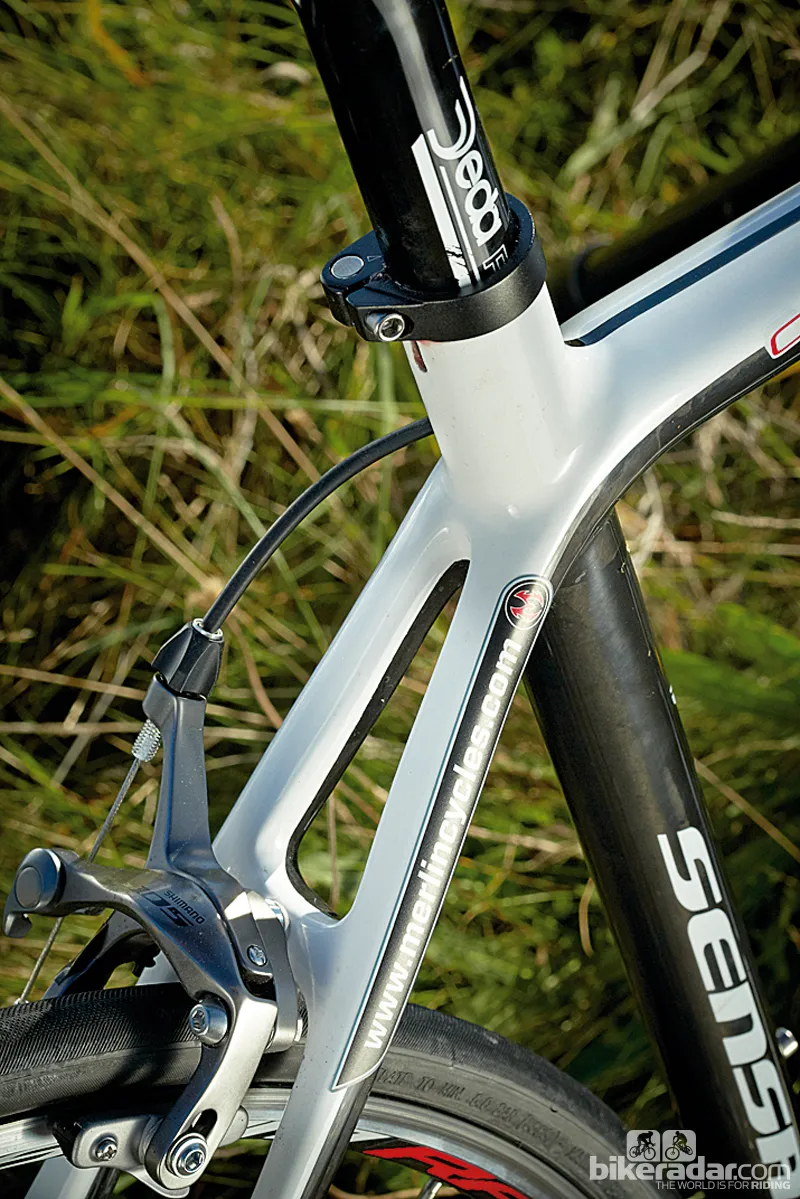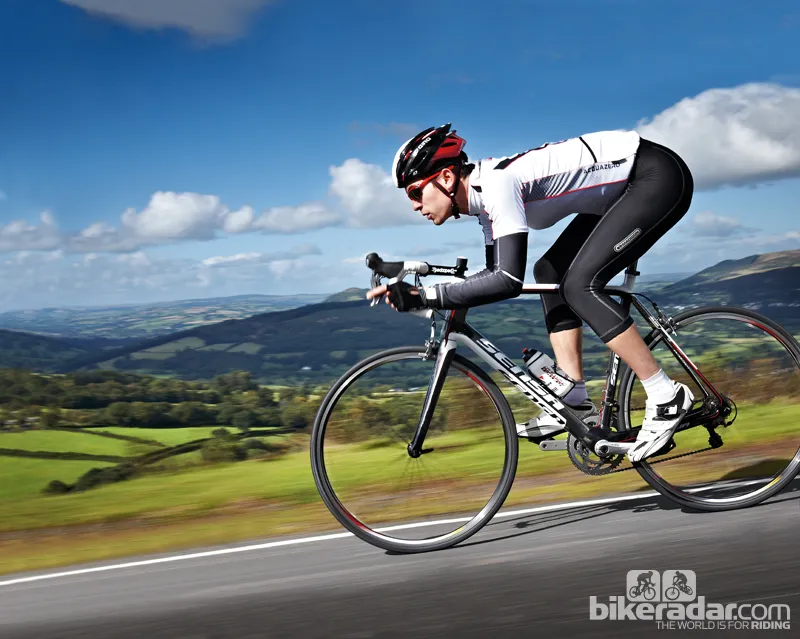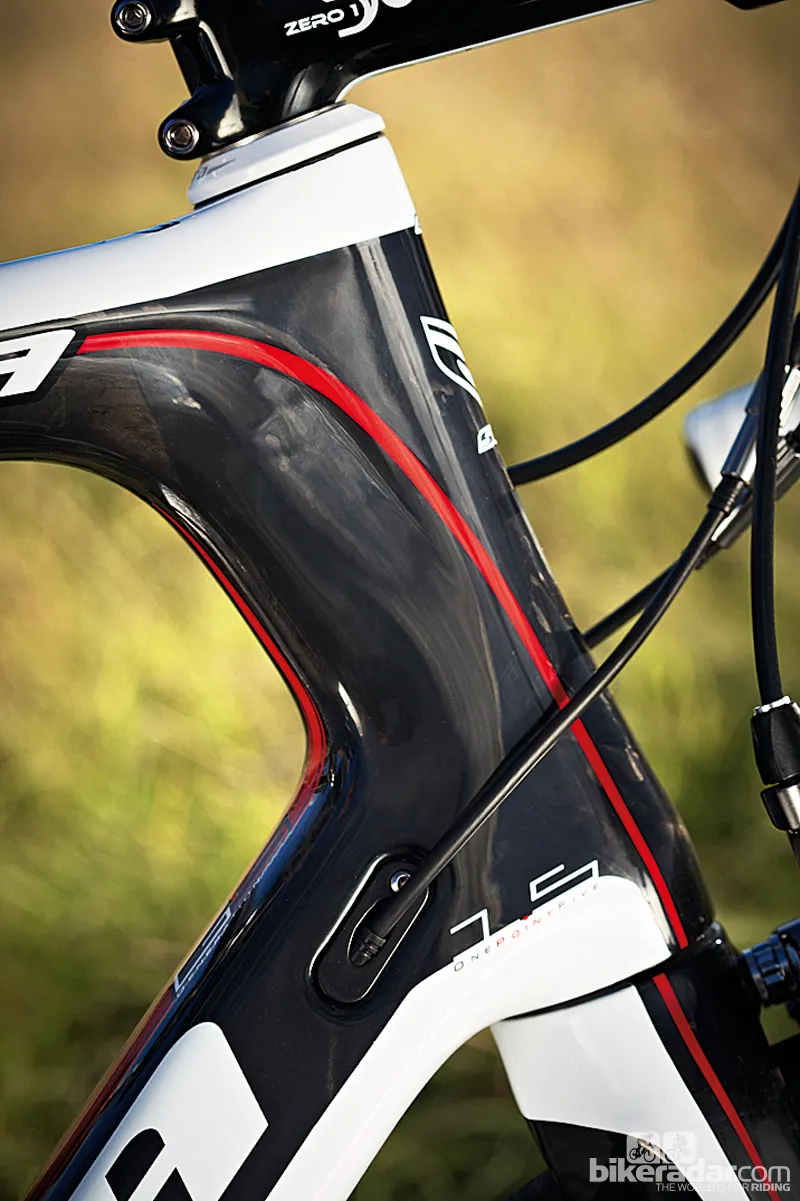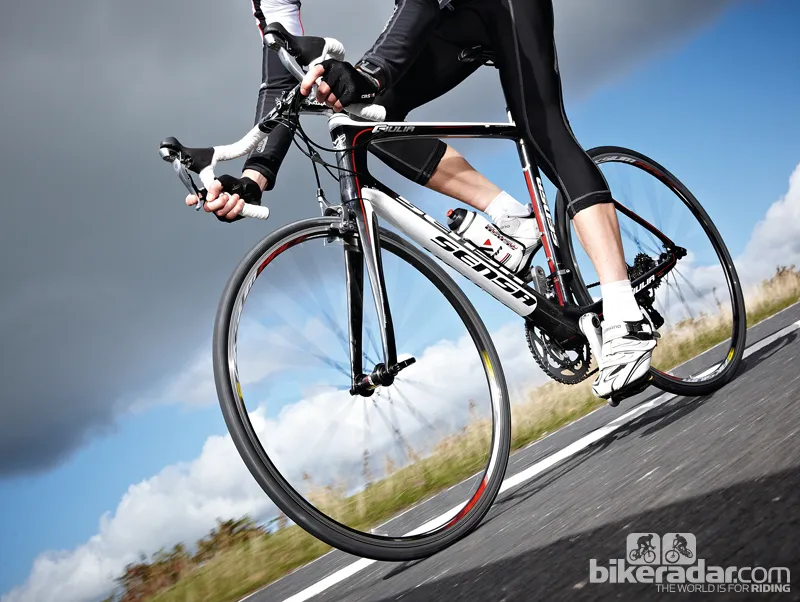Look over Sensa’s Giulia 105 frame and you soon notice plenty of features you don’t expect to see on a bike costing less than £1,500.
- Highs: Loaded spec, frameset
- Lows: Stiff oversized aluminium post
- Buy if: You want high-end spec and performance on a budget
For starters, there’s an aero-styled head tube with an oversized 1 1/2in lower race, which is heavily shaped and reinforced for front-end stiffness. Its full internal cable routing is also most welcome, and for good measure the frame is future-proofed, its fittings for electronic groupsets including a battery mount under the chainstay.
But what stands out is the kit – the Giulia has a super spec for the price. Full Shimano 105 groupset, Mavic Aksium wheels and Schwalbe Lugano tyres are impressive for the money.
Aluminium finishing kit from Deda and a San Marco Spid saddle round off a no-compromise build, and if you don’t like the compact 105 setup, UK importer Merlin also offer the Giulia with a standard chainset and a range of component or groupset upgrades.
But the Sensa backs up this spec with a performance that packs in plenty of punch on the road. Its bolstered front end translates into a bike with very composed handling. The bottom bracket shell is oversized for a press-fit BB86 bottom bracket and asymmetric for bags of drivetrain rigidity. The seatstays taper and kink towards the all-carbon dropouts, while the Giulia’s hugely oversized chainstays also promise stiffness under power.

The elegant seatstays are kinked and tapered
We have ridden sharper, more race-focused machines, but the Sensa has an innate stability at speed that positively encourages bad behaviour. We found ourselves pushing just that little bit harder on descents, getting outside of our usual comfort zone and testing the limits of grip on the Lugano tyres.
The lower half of the frame – from the down tube to the rear dropouts – is reassuringly rigid, proving super-responsive under hard pedalling efforts. The result is that it’s easy to maintain a high tempo and high average speed on the flat.
Over coarser surfaces the Sensa isn’t quite as accomplished as more comfort-orientated bikes, transmitting a fair amount of buzz through the seat of your pants. The 31.6mm aluminium seatpost doesn’t help and we’d recommend upgrading to a more comfortable carbon one sooner rather than later.
It’s a similar story at the front too. The carbon fork dissipates the worst road chatter while the stiff Deda bar offers great control, but there’s little give to add comfort, so some vibration does make it through to your hands – especially on longer rides. That said, it’s still one of the best budget options.
The wheel package is as good as we’ve seen for the money, with Mavic’s solid, dependable Aksiums and those Lugano tyres. Aksiums may not be the lightest option, but they do have a reputation for build quality and hard-wearing performance.
Switching to a lighter set of wheels during testing added plenty to the already impressive ride, and it’s easy to see how Sensa uses the same Giulia frame on bikes over £3,000. The Lugano isn’t a light tyre, but it does have a supple case, fine file-pattern tread and good puncture protection – a great choice for general and training use.
Like the sub-£1,000 Sensa Romagna we tested last issue, the Giulia has impressed us. Value for money is clearly high on the agenda of this accomplished, feature-filled carbon bike – and this is backed up with an impressive ride. Going Dutch? We think some of the more established brands should be looking out for this upstart from Holland.
This article was originally published in Cycling Plus magazine, available on Apple Newsstand and Zinio.


